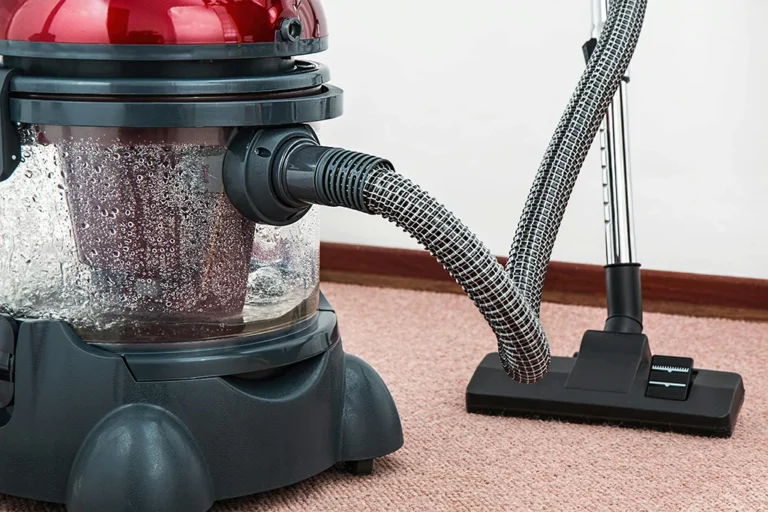10 Best Wi-Fi Routers for Blazing-Fast Internet

A reliable Wi-Fi router is the backbone of any connected home, providing stable, fast internet for all your devices. With advanced features like increased speeds, extended range, and user-friendly controls, the right router makes a noticeable difference in connectivity. Here’s a selection of top Wi-Fi routers, each chosen for its performance, coverage, and user features, to help you find the best fit for your network needs.
TP-Link AC1200 WiFi Router (Archer A54)
- Offers simultaneous 2.4GHz 300 Mbps and 5GHz 867 Mbps connections.
- Equipped with 4 external antennas for stable connections and optimal coverage.
- Supports IGMP Proxy/Snooping for efficient IPTV streaming.
- Features Access Point Mode for easy wired to wireless conversions.
- Utilizes WPA3 security protocol for enhanced cybersecurity.
- Managed easily through the TP-Link Tether app.
- Compatible with major ISPs like AT&T, Verizon, and Xfinity.
TP-Link AXE5400 Tri-Band WiFi 6E Router (Archer AXE75)
- Speeds up to 5400 Mbps for fast browsing and streaming.
- Includes a new 6 GHz band for faster connections and low latency.
- True Tri-Band and OFDMA technology allow multiple device connections.
- Powered by a 1.7 GHz Quad-Core CPU for improved performance.
- OneMesh support for seamless whole-home coverage.
- Compatible with VPN Server and Client configurations.
- TP-Link HomeShield provides robust security features.
TP-Link AX3000 WiFi 6 Router (Archer AX55)
- Offers speeds of 2402 Mbps on the 5 GHz band and 574 Mbps on the 2.4 GHz band.
- Ensures smooth gaming and video streaming with OFDMA technology.
- Features four high-gain antennas and Beamforming for expanded coverage.
- Target Wake Time improves device battery life.
- Compatible with Alexa for voice control.
- TP-Link HomeShield provides premium security features.
- Works with major ISPs like AT&T, Verizon, and Spectrum.
TP-Link AX1800 WiFi 6 Router V4 (Archer AX21)
- Supports Open VPN and PPTP VPN servers for secure remote access.
- Delivers speeds up to 1.8 Gbps, ideal for streaming and gaming.
- OFDMA technology enhances connectivity for multiple devices.
- Beamforming technology and 4 high-gain antennas ensure strong coverage.
- Compatible with all major ISPs, requiring a modem for most connections.
- Designed for improved stability during online activities.
TP-Link Deco Mesh AC1900 WiFi System (Deco S4)
- Provides coverage up to 5,500 square feet with three units.
- Eliminates dead zones with seamless roaming and a single network name.
- AC1900 speeds support connectivity for up to 100 devices.
- Robust parental controls for managing online activity.
- Easy setup via the Deco app with Alexa integration for guest Wi-Fi.
- Compatible with various internet providers, modem required for connection.
TP-Link Dual-Band BE3600 Wi-Fi 7 Router (Archer BE230)
- Wi-Fi 7 technology offers faster speeds and more data capacity.
- Speeds up to 3.6 Gbps with dual 2.5 Gbps WAN and LAN ports.
- Features a next-gen 2.0 GHz quad-core processor for high data throughput.
- Four high-performance antennas with beamforming ensure strong connections.
- EasyMesh compatibility for seamless coverage throughout your home.
- TP-Link HomeShield enhances network security.
- Manage your network easily with the TP-Link Tether app.
TP-Link Deco AX3000 WiFi 6 Mesh System (Deco X55)
- Covers homes up to 6500 square feet with Wi-Fi 6 technology.
- Connects up to 150 devices with stable connections.
- Each unit has three Gigabit Ethernet ports, supporting wired backhaul.
- AI-driven mesh system adapts to your network environment.
- Deco app for easy setup and network management.
- TP-Link HomeShield provides robust security features.
- Compatible with all major ISPs, modem required for internet connection.
Amazon eero 6+ Mesh WiFi Router
- Affordable gigabit speed router with Wi-Fi 6 support.
- Features TrueMesh technology for minimal connectivity drop-offs.
- Set up and manage your network via the eero app.
- Automatic updates enhance network security over time.
- Includes a built-in smart home hub compatible with Thread and Zigbee.
- Easily expandable with cross-compatible hardware for future needs.
ASUS RT-AX1800S Dual Band WiFi 6 Extendable Router
- New-Gen WiFi Standard – WiFi 6(802.11ax) standard supporting MU-MIMO and OFDMA technology for better efficiency and throughput.Antenna : External antenna x 4. Processor : Dual-core (4 VPE). Power Supply : AC Input : 110V~240V(50~60Hz), DC Output : 12 V with max. 1.5A current.
- RT-AX1800S supports 1024-QAM for dramatically faster wireless connections
- Supporting not only MU-MIMO but also OFDMA technique to efficiently allocate channels, communicate with multiple devices simultaneously
- 5 Gigabit ports – One Gigabit WAN port and four Gigabit LAN ports, 10X faster than 100–Base T Ethernet.
- Protect your home network with AiProtection Classic, powered by Trend Micro. And when away from home, ASUS Instant Guard gives you a one-click secure VPN.
TP-Link AC1900 Smart WiFi Router (Archer A8)
- OneMesh compatible for seamless integration with extenders.
- Supports speeds of 600 Mbps on 2.4GHz and 1300 Mbps on 5GHz.
- Beamforming technology enhances Wi-Fi coverage and range.
- Features full gigabit ports for fast wired connections.
- Parental controls included for managing children's online access.
- Compatible with major ISPs, requires a modem for most connections.
Advertising Disclosure: Links on our site may lead to commissions from qualifying purchases, helping us feature the best products.
Why a Good Wi-Fi Router is Essential for a Connected Home
Wi-Fi routers are the link between your devices and your internet connection, allowing uninterrupted streaming, online gaming, and smooth browsing. A well-performing router maximizes your internet’s potential by distributing bandwidth evenly, preventing lag, and minimizing disruptions. This is especially useful in homes with multiple connected devices, including smartphones, smart TVs, and home assistants.
A high-quality Wi-Fi router also improves security, allowing you to safeguard your network with encryption, firewall protection, and even parental controls. This level of control is helpful for families looking to manage internet access or ensure that devices stay safe from potential threats online.
Features to Look for in a Wi-Fi Router
Choosing a Wi-Fi router with the right features can elevate your internet experience. Here are some key aspects to consider:
Speed Ratings: Measured in Mbps (megabits per second), speed ratings give an idea of the router’s capability. For basic usage, 300-600 Mbps may be sufficient, while advanced streaming and gaming require faster speeds, typically 1,000 Mbps or higher.
Dual-Band and Tri-Band Options: Dual-band routers operate on both 2.4 GHz and 5 GHz frequencies, providing better device management and reduced congestion. Tri-band routers add a second 5 GHz band, which is ideal for larger households with numerous connected devices.
Types of Wi-Fi Routers and Choosing the Right Fit
Wi-Fi routers come in different types to meet various connectivity needs. Understanding each type can help you find the most suitable router for your home setup.
- Traditional Routers: These basic routers are effective for small homes with fewer devices. They provide standard Wi-Fi coverage and are generally affordable, making them suitable for single users or smaller households.
- Mesh Routers: Ideal for large homes, mesh routers consist of multiple units spread across the home to eliminate dead zones and provide consistent coverage. These routers work well for multi-story homes or spaces with thick walls where single routers may struggle.
Benefits of Dual-Band and Tri-Band Routers
Dual-band and tri-band routers offer more flexibility by managing connections across multiple frequencies. Dual-band routers offer a 2.4 GHz band for general browsing and a 5 GHz band for high-speed activities like gaming or streaming. Tri-band routers provide an additional 5 GHz band, which is ideal for homes with many devices or data-heavy activities.
This separation helps prevent traffic on one band from slowing down all devices. For example, if you’re streaming 4K video on one device, other devices can connect to a different band for smoother performance, reducing lag and buffering.
How Many Devices Can a Wi-Fi Router Support?
When selecting a Wi-Fi router, it’s helpful to know the number of devices it can support. Routers come with device capacity recommendations, which are especially important in households with multiple smart devices. Most basic routers handle around 15-20 devices, while advanced models can support 50 or more.
Larger homes or households with smart appliances may benefit from high-capacity routers. Choosing one that matches your household’s needs can improve overall connection stability and prevent slowdowns from overloading.
Router Security Features to Protect Your Network
Security is a fundamental aspect of any Wi-Fi router. Many models come with built-in security features like WPA3 encryption, firewall settings, and parental controls. WPA3 is the latest Wi-Fi security standard, providing enhanced encryption and protection against hacking attempts.
Parental controls allow you to restrict internet access to certain devices or limit usage time, which can be useful for households with children. Additionally, some routers offer guest network options, creating a separate connection for visitors without compromising your main network’s security.
Factors to Consider for Router Range and Coverage
Range is one of the most important factors for ensuring consistent connectivity throughout the home. A router’s range is impacted by its frequency bands, internal antennas, and overall power. Generally, routers with higher frequency bands, like 5 GHz, provide faster speeds but cover shorter distances. Lower frequencies, like 2.4 GHz, reach farther but may be slower.
For larger homes or properties with multiple floors, a router with a stronger range or mesh compatibility ensures seamless coverage without interruptions. Additionally, consider models with beamforming technology, which directs the Wi-Fi signal toward specific devices for stronger connections.
Using Beamforming for Targeted Wi-Fi Signal Strength
Beamforming is a technology that improves Wi-Fi performance by focusing the signal toward connected devices instead of broadcasting in all directions. This feature enhances the connection quality and stability for specific devices, making it ideal for activities like video conferencing or online gaming.
Routers with beamforming detect where devices are located and boost the signal accordingly, providing stronger and more reliable connections across the home. This is especially beneficial in areas where the signal may otherwise weaken, such as rooms far from the router.
Setting Up Quality of Service (QoS) for Device Priority
Quality of Service (QoS) is a feature that lets you prioritize devices or activities, such as streaming or gaming, to receive more bandwidth. This ensures smoother performance for high-demand tasks, especially in households with multiple users.
Router Speeds and Performance Ratings
Router speeds are often advertised in Mbps, but the actual performance depends on your internet plan and connected devices. Choosing a router with speeds that match or exceed your internet plan ensures you get the most out of your connection. For basic browsing, 300 Mbps is sufficient, while homes with streaming, gaming, or multiple devices benefit from speeds of 1,000 Mbps or more.
Additionally, routers labeled as Wi-Fi 6 (or 802.11ax) offer faster speeds and greater efficiency, especially in busy networks. Wi-Fi 6 routers are designed to handle multiple devices efficiently, making them suitable for smart homes or high-demand environments.















